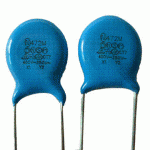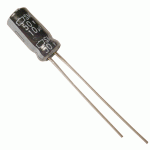This Flashing Circuit used to be a real ‘wowser!’ with students before LEDs become commonplace (around 1995). You’re going to build a circuit that has a control knob that will allow you to set the flash speed of the LED. You can try different LEDs or mini-lamps to see what kind of an effect you get. Are you ready?
NPN and PNP transistors are similar in that when current is applied to the base, electricity flows through them. But, they way they are used is different. NPN transistors are often used to control whether a circuit is completed by connecting it to ground or not, where PNP control the positive current going into a device (or portion of a circuit). NPN transistors are often used where larger currents need to be controlled, because it’s easier for a transistor to control the ground side of a circuit than the plus power side of it.
So, why does the LED flash? Remember, a capacitor is like a storage tank for electricity. You fill it up, then empty it out. But, it takes time to fill up and empty. This circuit uses the time it takes to fill and empty as a delay for turning the LED on and off. How fast it fills up depends on the value of the resistor that is connected to it. We’re using a variable resistor, so we can adjust how fast it fills up, and thus adjust the flash rate.
Click here for Unit 14 (Lesson 1) schematics.
Please login or register to read the rest of this content.


